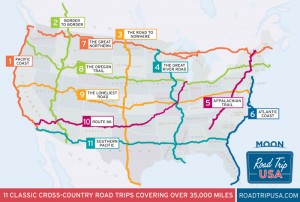
Group travel vs solo travel: The choice between these two vastly different travel styles often hinges on personal preferences, budget constraints, and desired experiences. Embarking on a group tour offers the convenience of pre-planned itineraries, shared costs, and the opportunity to meet fellow travelers. Conversely, solo travel provides unparalleled flexibility, allowing for spontaneous adventures and deeper self-discovery. This comparison delves into the multifaceted aspects of both approaches, helping you determine which aligns best with your individual travel aspirations.
From cost analysis and itinerary flexibility to social dynamics and safety considerations, we’ll explore the nuances of each style. We’ll examine accommodation choices, transportation options, and even share tips for securing the best flight and train deals. Ultimately, the goal is to empower you to make an informed decision, ensuring your next trip is both enjoyable and fulfilling, regardless of whether you choose the camaraderie of a group or the independence of solo exploration.
Social Interaction and Experiences
The choice between group and solo travel significantly impacts the type and quantity of social interaction experienced. Group travel inherently fosters a sense of community and shared experiences, while solo travel offers opportunities for introspection and more deliberate connections. Understanding these differences is crucial in choosing the travel style best suited to individual preferences and goals.Group travel offers a readily available social network.
The shared itinerary and activities create natural opportunities for bonding and making new friends. Solo travel, conversely, allows for a deeper engagement with one’s inner self and a more focused interaction with those encountered along the way. The types of social interactions differ considerably between the two.
Types of Social Interaction in Group and Solo Travel
In group travel, interactions tend to be more superficial yet numerous. Shared meals, guided tours, and planned activities facilitate interactions with fellow travelers, tour guides, and local people within the context of the organized trip. These interactions can range from brief exchanges to lasting friendships. For example, a guided walking tour in Rome might lead to conversations with fellow travelers about the historical significance of a particular monument, fostering a shared sense of wonder and learning.
Conversely, solo travel often involves more meaningful, albeit fewer, interactions. Conversations with locals in a small cafe, engaging with fellow travelers at a hostel, or even just observing and learning from people encountered in daily life can be deeply enriching. The spontaneity of solo travel allows for deeper connections formed organically, rather than structured by a pre-planned itinerary.
For instance, striking up a conversation with a bartender in a local pub in Dublin might lead to an unexpected recommendation for a hidden gem, a shared story, or even a newfound friendship.
Comparison of Social Benefits and Drawbacks
| Feature | Group Travel | Solo Travel |
|---|---|---|
| Ease of Meeting People | High – built-in social structure | Moderate – requires more initiative |
| Depth of Connections | Often superficial, but can lead to strong bonds | Potentially deeper, but fewer in number |
| Social Support | High – readily available support network | Low – reliance on self-sufficiency |
| Introspection | Limited – focus on shared experiences | High – ample time for self-reflection |
| Cost | Can be more expensive due to shared group activities | Potentially cheaper, depending on travel style |
| Flexibility | Low – bound by group itinerary | High – freedom to adjust plans as desired |
Travel Safety and Security
Travel safety and security are paramount considerations, regardless of whether you’re traveling solo or as part of a group. Both options present unique advantages and disadvantages regarding personal safety and the potential for incidents. Understanding these differences allows travelers to make informed choices and implement appropriate preventative measures.The inherent risks associated with travel vary depending on the destination, the type of activities undertaken, and the traveler’s personal preparedness.
Solo travelers often face a heightened sense of vulnerability, while group travel, while offering a safety net, can also present its own set of security challenges.
Group Travel Safety and Security Considerations
Group travel inherently offers a degree of enhanced safety. The presence of others provides a sense of security and a built-in support system. In case of emergencies, there’s a greater likelihood of assistance being readily available. However, relying solely on the group can lead to complacency, and it’s crucial to remain vigilant. Larger groups can also be more conspicuous targets for petty theft or scams.
Solo Travel Safety and Security Considerations
Solo travel, while offering greater flexibility and independence, demands a higher level of personal responsibility for safety and security. The lack of a built-in support system necessitates meticulous planning and a proactive approach to risk mitigation. Solo travelers need to be especially aware of their surroundings and take extra precautions to avoid becoming targets of crime.
Potential Risks and Challenges: Group Travel
- Over-reliance on the group: Individuals might become less vigilant about their personal belongings or surroundings, assuming the group’s collective awareness will suffice.
- Groupthink: The pressure to conform within a group can sometimes lead to overlooking potential safety risks or ignoring individual concerns.
- Target for theft: Large groups can attract unwanted attention, making them more vulnerable to organized theft or scams.
- Liability issues: In case of accidents or incidents, liability issues can become complex within a large group.
Potential Risks and Challenges: Solo Travel
- Vulnerability to crime: Solo travelers are more easily targeted by criminals, especially in unfamiliar or unsafe areas.
- Lack of immediate assistance: In case of an emergency, help may not be readily available.
- Increased risk of accidents: The absence of a travel companion increases the risk of accidents or injuries going unnoticed or unaddressed promptly.
- Difficulty navigating unfamiliar areas: Getting lost or disoriented can heighten the risk of encountering dangerous situations.
Safety and Security Enhancement Strategies: Group Travel
Sharing responsibilities within the group, such as keeping track of belongings or monitoring the surroundings, can significantly enhance safety. Regularly checking in with each other and establishing clear communication protocols can prevent individuals from becoming separated or lost. Sticking to well-lit and populated areas, especially at night, is crucial.
Safety and Security Enhancement Strategies: Solo Travel
Thorough research of the destination, including local laws, customs, and potential safety concerns, is vital. Sharing your itinerary with trusted contacts back home, regularly checking in, and utilizing reliable transportation are essential. Staying in well-reviewed accommodations and avoiding displaying expensive jewelry or electronics publicly are effective preventative measures. Learning a few basic phrases in the local language can also be helpful in emergencies.
Travel Styles and Associated Transportation
Choosing the right mode of transportation significantly impacts both the cost and overall experience of a trip, varying considerably between group and solo travel. Factors such as budget, desired level of comfort, and the itinerary’s flexibility all play a role in this decision. This section will explore the common transportation options for both group and solo travelers, comparing their respective conveniences and cost-effectiveness.
Transportation Modes in Group and Solo Travel
The selection of transportation methods often differs greatly depending on whether one travels alone or as part of a group. Group travel frequently involves pre-arranged transportation, while solo travel offers more freedom of choice and flexibility.
- Group Travel: Group tours often utilize chartered buses or vans for land travel, providing convenient transportation directly to planned destinations. Airlines are commonly used for longer distances, with pre-booked flights ensuring everyone travels together. Rental cars are less common in organized group tours due to logistical complexities and the need for designated drivers. The convenience is high, with minimal planning required from individual travelers.
However, this comes at a potentially higher cost, as the tour operator often negotiates group rates that might not always represent the best individual value.
- Solo Travel: Solo travelers enjoy greater freedom in their transportation choices. They can utilize a variety of options including trains, buses, rental cars, ride-sharing services, and flights, selecting the most cost-effective or convenient option for each leg of their journey. Rental cars offer flexibility but incur costs for insurance, gas, and potential parking fees. Public transportation like trains and buses is generally more budget-friendly, though it may require more planning and time.
Flights offer speed but can be expensive, especially if booked at short notice. The increased flexibility comes with the responsibility of planning and managing all aspects of transportation independently.
Cost-Effectiveness of Transportation Options
The cost of transportation varies significantly between group and solo travel, influenced by the chosen mode and the number of people sharing the expense.
- Group Travel: While the upfront cost per person might seem high due to tour packages including transportation, economies of scale often make group travel relatively cost-effective for certain modes of transport. Chartered buses, for instance, divide the cost among participants, potentially lowering the individual cost compared to booking individual flights or renting multiple cars. However, the lack of flexibility in changing plans can lead to unexpected expenses if adjustments are needed.
- Solo Travel: Solo travelers often find that budgeting for transportation requires more careful planning. While public transportation tends to be cheaper, the time commitment might be longer. Rental cars offer convenience but incur various costs, potentially making them less budget-friendly for shorter trips. Flights, while fast, are usually more expensive per person than shared group transportation options. The ability to adapt the itinerary to find the best deals can offset some of these costs, but requires more effort and research.
Accommodation Options
Choosing accommodation significantly impacts the overall group travel versus solo travel experience. The type of lodging selected directly influences comfort levels, budget, and the overall social atmosphere of the trip. Group travel often necessitates different accommodation considerations compared to solo adventures, impacting both cost and social interaction.
Group Travel Accommodation
Group travel frequently involves larger accommodations designed to house multiple people. Hotels, particularly those with group booking options, offer amenities like meeting rooms and discounted rates for larger parties. Hostels, while typically associated with solo travelers, can also cater to groups, providing shared dorm rooms or private rooms for smaller subgroups within a larger group. Guesthouses, offering a more intimate and homely experience, can also be suitable for smaller groups, although larger groups may find them less practical.
Solo Travel Accommodation
Solo travelers generally prioritize convenience, affordability, and a degree of independence. Hostels remain a popular choice, offering budget-friendly options and opportunities for social interaction. However, solo travelers also frequently opt for budget hotels, guesthouses, or vacation rentals, depending on their budget and desired level of privacy. Hotels, while more expensive, offer privacy and a range of amenities.
Guesthouses provide a more personal and often locally-owned experience. Vacation rentals provide self-catering options and the privacy of a whole apartment or house.
Budget Accommodation Options
Budget accommodation plays a significant role in both group and solo travel. Hostels, for example, typically offer dorm-style rooms with multiple beds, shared bathrooms, and common areas, creating an atmosphere conducive to meeting fellow travelers. Amenities vary, but often include Wi-Fi, laundry facilities, and sometimes a communal kitchen. Prices typically range from $15 to $40 per night, depending on location and amenities.
Imagine a bustling hostel in Bangkok, with vibrant colours, shared spaces filled with travellers from around the globe, the sounds of laughter and conversations blending in the air.Guesthouses offer a more intimate setting, often run by local families or individuals. They typically feature fewer rooms than hotels, providing a more personal experience. Amenities vary greatly, but often include private rooms with ensuite bathrooms, breakfast, and a welcoming atmosphere.
Prices generally range from $30 to $80 per night, depending on location and amenities. Picture a charming guesthouse nestled in a quaint village in Tuscany, with rustic décor, a cozy fireplace, and a delightful breakfast served in a sun-drenched courtyard.Vacation rentals, such as Airbnb or VRBO listings, offer a greater degree of privacy and self-sufficiency. These can range from small studio apartments to large houses, offering kitchens, living areas, and bedrooms.
The atmosphere is often more homelike, and amenities vary depending on the specific property. Prices vary considerably, depending on location, size, and amenities, ranging from $50 to several hundred dollars per night. Envision a modern apartment in a vibrant city like New York, complete with a fully equipped kitchen, comfortable living space, and stunning city views, providing a home away from home experience.
Flight Deals and Hacks
Securing affordable airfare is a crucial element of budget-conscious travel, whether you’re embarking on a solo adventure or a group trip. Numerous strategies and tools exist to help travelers navigate the complexities of flight booking and find the best possible prices. Understanding these techniques can significantly reduce travel costs and allow for more funds to be allocated towards other aspects of the journey.Finding the cheapest flights often involves a combination of planning, flexibility, and savvy use of online resources.
The following strategies can significantly improve your chances of securing affordable airfare.
Effective Strategies for Finding Affordable Flights
Several methods can dramatically impact the cost of your air tickets. These strategies require some planning and flexibility, but the potential savings are substantial.
- Be Flexible with Your Travel Dates: Mid-week flights (Tuesdays and Wednesdays) are often cheaper than weekend flights. Similarly, flying during the off-season or shoulder seasons (periods before and after peak tourist times) can result in significant savings. For example, a flight from New York to London in January might be 40% cheaper than the same flight in July.
- Consider Alternative Airports: Flying into a smaller, less popular airport near your destination can sometimes yield lower fares. A flight into a smaller airport might require additional ground transportation, but the savings on the flight itself can often outweigh this added expense. For instance, flying into a smaller airport outside a major city could save hundreds of dollars.
- Use Incognito Mode: Airlines and travel websites often track your browsing history and may increase prices based on your repeated searches. Using incognito or private browsing mode can help prevent this price inflation. This prevents cookies from tracking your searches and potentially inflating prices.
- Set Price Alerts: Many flight comparison websites allow you to set price alerts. This feature notifies you when the price of a specific flight drops, allowing you to book at the best possible moment. This is particularly useful for popular routes or during periods of high demand.
- Consider Budget Airlines: Budget airlines often offer significantly lower fares than traditional carriers. While they may have additional fees for baggage or other services, the base fare is usually much lower. These airlines may have limitations on baggage allowance or seat selection, but can be a great option for budget travelers.
Utilizing Flight Comparison Websites Effectively
Flight comparison websites are invaluable tools for finding the best flight deals. However, it’s important to use them strategically to maximize their effectiveness.Using multiple flight comparison websites simultaneously is crucial. Different websites may have access to different deals and fares. By comparing results across several platforms, you increase your chances of finding the lowest price. For example, comparing Kayak, Google Flights, Skyscanner, and Expedia can often reveal significant price discrepancies.
It’s also important to understand that the displayed price often doesn’t include baggage fees or other additional charges.
Booking Flights in Advance Versus Last-Minute
The optimal time to book a flight depends heavily on the route, time of year, and demand.Generally, booking flights well in advance (2-3 months or more) is recommended for popular routes and during peak travel seasons. This allows you to secure a better price and avoid potential price hikes closer to the departure date. However, last-minute deals sometimes appear, particularly for less popular routes or during periods of low demand.
Last-minute booking requires flexibility and a willingness to accept less desirable flight times or layovers. For example, a flight booked three months in advance might cost $500, while the same flight booked a week before departure might cost $700 or more. Conversely, a less popular route might offer a last-minute deal for $300, when the price was $450 months before.
Train Travel Guides
Train travel offers a unique blend of efficiency and scenic beauty, making it a compelling alternative to other modes of transportation for various journeys. This guide explores effective booking strategies, weighs the advantages and disadvantages across different trip types, and provides practical tips for enhancing your overall train travel experience.
Efficient and Cost-Effective Train Ticket Booking
Booking train tickets strategically can significantly impact both your budget and your journey’s smoothness. Several factors contribute to securing the best fares. Websites like Rail Europe (for international travel within Europe) and the respective national railway websites (e.g., Amtrak for the US, Trainline for UK and Europe) offer comprehensive search functionalities. Booking in advance, particularly for popular routes or during peak seasons, often yields lower prices.
Consider off-peak travel times to avoid surcharges and potentially secure better deals. Flexible travel dates can also unlock substantial savings, as fares often fluctuate based on demand. Look for discounts for seniors, students, or groups, as these can significantly reduce the overall cost. Finally, subscribing to email newsletters from railway companies or using fare comparison websites can alert you to special offers and promotions.
Advantages and Disadvantages of Train Travel for Different Trip Types
The suitability of train travel varies depending on the type of trip. For shorter distances, trains often provide a convenient and comfortable alternative to driving, eliminating parking hassles and potential traffic delays. Long-distance journeys benefit from the ability to relax, work, or simply enjoy the scenery, unlike the confinement of a car or airplane. However, trains may not be the fastest option for all trips, particularly when compared to air travel for long distances.
The lack of direct routes or infrequent services in certain areas can also pose limitations. For example, while a train journey between London and Paris is relatively efficient, reaching a remote mountain village might require a lengthy and multi-modal journey. Similarly, while train travel is ideal for exploring cities with extensive rail networks, it might be less practical for trips involving numerous remote locations.
Tips for a More Comfortable and Enjoyable Train Journey
Several strategies can transform a train journey from merely a means of transport to a pleasant experience. Pre-booking seats, especially on busy routes, guarantees your preferred location and avoids the last-minute scramble. Packing appropriately for the journey is crucial; comfortable clothing, a neck pillow, and a good book or entertainment can significantly enhance comfort. Consider bringing snacks and drinks to avoid overpriced onboard options.
Familiarizing yourself with the train schedule and platform information beforehand minimizes stress and potential delays. Utilizing onboard amenities such as Wi-Fi (where available) and charging points can maximize productivity or entertainment. Engaging in conversations with fellow passengers (if you’re comfortable doing so) can add a social element to the journey. Lastly, being mindful of other passengers and maintaining a respectful demeanor contributes to a pleasant environment for everyone.
Cruise Ship Reviews (Example: Caribbean Cruises)

Caribbean cruises offer a diverse range of experiences, from relaxing beach days to exciting shore excursions. Choosing the right cruise line and cabin type is crucial for maximizing enjoyment. This section will compare three popular cruise lines and discuss cabin types and shore excursions to help you plan your ideal Caribbean getaway.
Caribbean Cruise Line Comparison
The following table compares three popular cruise lines offering Caribbean cruises: Royal Caribbean International, Carnival Cruise Line, and Disney Cruise Line. Each line caters to a slightly different demographic and offers a unique onboard experience.
| Cruise Line | Key Features & Amenities | Target Audience |
|---|---|---|
| Royal Caribbean International | Known for its innovative and expansive ships, featuring water parks, ice-skating rinks, rock climbing walls, and Broadway-style shows. Offers a wide range of dining options, from casual buffets to fine dining restaurants. | Families, couples, and adventurous travelers seeking a wide variety of onboard activities and entertainment. |
| Carnival Cruise Line | Focuses on a fun and lively atmosphere, with a strong emphasis on affordability and casual dining. Features various bars, pools, and live music venues. Known for its “Fun Ship” atmosphere. | Budget-conscious travelers, families, and groups looking for a vibrant and energetic cruise experience. |
| Disney Cruise Line | Offers a magical experience tailored to families with children. Features Disney-themed characters, shows, and activities. Provides a high level of customer service and attention to detail. | Families with children, particularly those who are fans of Disney characters and movies. |
Cruise Cabin Types: Pros and Cons
Selecting the right cabin type significantly impacts your cruise experience. Factors to consider include budget, desired level of privacy, and proximity to amenities.
| Cabin Type | Pros | Cons |
|---|---|---|
| Interior | Most affordable option, provides basic amenities. | Lack of natural light and ocean views. Can feel cramped. |
| Oceanview | Offers a window or porthole with an ocean view, providing natural light and a sense of spaciousness compared to interior cabins. | Generally more expensive than interior cabins, but less expensive than balcony cabins. |
| Balcony | Provides a private balcony with stunning ocean views, offering a more luxurious and private experience. | Most expensive option. |
| Suite | Largest and most luxurious cabins, often including additional amenities such as butler service, larger living areas, and upgraded dining options. | Significantly more expensive than other cabin types. |
Caribbean Cruise Shore Excursions
Caribbean cruises offer a wide array of shore excursions catering to diverse interests. These excursions provide opportunities to explore the unique culture, history, and natural beauty of the islands.Shore excursions typically include options such as beach days, historical site visits, snorkeling or diving trips, nature walks, and cultural immersion experiences. For example, in Jamaica, excursions might include visits to Dunn’s River Falls, exploring the Blue Mountains, or relaxing on the beaches of Montego Bay.
In St. Thomas, options might range from exploring historic Charlotte Amalie to snorkeling or diving in Buck Island Reef National Monument. The specific excursions offered will vary depending on the cruise line and itinerary.
Road Trip Guides (Example: Pacific Coast Highway): Group Travel Vs Solo Travel
Embarking on a road trip along the iconic Pacific Coast Highway (PCH) offers a breathtaking journey filled with stunning coastal views, charming towns, and diverse activities. This guide provides a sample itinerary, essential planning tips, and advice on selecting the right vehicle for your adventure.
Sample Pacific Coast Highway Road Trip Itinerary (7 Days)
This itinerary focuses on the most scenic portion of the PCH, from Los Angeles to San Francisco. Adjust the duration and specific stops based on your preferences and available time.
- Day 1: Los Angeles to Santa Barbara (approx. 90 miles): Begin in Los Angeles, exploring iconic sights like the Hollywood Walk of Fame before heading north. Enjoy the scenic drive and stop at Malibu for lunch and beach time. Spend the night in Santa Barbara, known for its Spanish architecture and beautiful beaches.
- Day 2: Santa Barbara to Big Sur (approx. 120 miles): Continue north along the coast, stopping at scenic overlooks and smaller towns like Solvang, a charming Danish village. Arrive in Big Sur, renowned for its dramatic cliffs, redwood forests, and stunning coastline. Consider hiking to McWay Falls in Julia Pfeiffer Burns State Park.
- Day 3: Big Sur Exploration: Dedicate this day to exploring Big Sur. Hike along the coast, visit Pfeiffer Big Sur State Park, or simply relax and enjoy the breathtaking views. Consider a scenic drive on Highway 1, which offers even more dramatic vistas.
- Day 4: Big Sur to Monterey/Carmel (approx. 70 miles): Drive north, stopping at Bixby Bridge for iconic photos. Explore the charming town of Carmel-by-the-Sea, known for its art galleries and unique shops. Visit the Monterey Bay Aquarium, a world-renowned aquarium showcasing diverse marine life.
- Day 5: Monterey/Carmel to San Simeon (approx. 60 miles): Visit Hearst Castle, a historical landmark showcasing opulent architecture and stunning views. Explore the nearby beaches and enjoy the coastal scenery.
- Day 6: San Simeon to San Luis Obispo (approx. 45 miles): Enjoy a more relaxed pace today. Explore the charming town of San Luis Obispo, known for its vibrant downtown area and Mission San Luis Obispo de Tolosa. Enjoy local restaurants and breweries.
- Day 7: San Luis Obispo to San Francisco (approx. 170 miles): Complete your journey by driving to San Francisco. This leg might require an earlier start. Consider stopping at Morro Bay for a final coastal view before arriving in San Francisco.
Tips for Planning a Successful and Safe Road Trip
Thorough planning is crucial for a smooth and safe road trip. This includes considering factors like vehicle maintenance, route planning, and emergency preparedness.
- Vehicle Maintenance: Ensure your vehicle is in top condition before you leave. Check tire pressure, oil levels, and other vital components. Schedule any necessary repairs beforehand.
- Route Planning: Plan your route in advance, accounting for potential traffic delays and road closures. Utilize GPS navigation but also carry physical maps as a backup.
- Accommodation Bookings: Book accommodations in advance, especially during peak season. Consider a mix of hotels, motels, and potentially camping for a more budget-friendly option.
- Emergency Preparedness: Pack an emergency kit including a first-aid kit, jumper cables, a flashlight, and extra water and snacks. Inform someone of your itinerary and expected arrival times.
- Driving Safety: Be aware of the driving conditions, especially on winding coastal roads. Take frequent breaks to avoid fatigue. Obey speed limits and be mindful of other drivers.
Choosing the Right Vehicle for a Road Trip
The ideal vehicle depends on your budget, group size, and preferences. Consider factors like fuel efficiency, cargo space, and comfort.
For a solo traveler or a couple, a fuel-efficient car or SUV might suffice. For larger groups, an SUV or minivan offers more space and comfort. If you plan on camping or carrying significant luggage, a vehicle with ample cargo space is essential. Consider renting a vehicle specifically designed for road trips, such as a campervan, for a unique experience.
Remember to factor in the cost of gas and potential tolls when making your decision.
Budget Accommodation Tips
Securing affordable lodging is crucial for budget-conscious travelers. This section details strategies for finding and booking inexpensive accommodation worldwide, negotiating lower prices, and understanding the advantages and disadvantages of various budget options. By employing these tips, travelers can significantly reduce accommodation costs without sacrificing comfort or convenience.Finding and booking budget-friendly accommodation involves leveraging online resources and understanding seasonal variations.
Finding Budget-Friendly Accommodation Worldwide
Numerous websites specialize in budget travel, offering a wide range of options from hostels to budget hotels and vacation rentals. Websites like Hostelworld, Booking.com, Expedia, and Kayak allow users to filter searches by price, location, and amenities. Consider using price comparison websites to find the best deals across multiple platforms. Furthermore, exploring lesser-known booking sites specific to a region can often uncover hidden gems and lower prices.
Remember to check reviews before booking to ensure the accommodation meets your expectations. Off-season travel often results in significantly lower prices, so consider visiting popular destinations during the shoulder seasons (spring and autumn) for better deals.
Negotiating Lower Prices on Accommodation
While many online platforms offer fixed prices, there are still opportunities to negotiate lower rates, particularly with smaller, independently owned accommodations. Contacting the accommodation directly via email or phone, rather than relying solely on online booking platforms, can open the door to negotiations. Mentioning your length of stay, or booking multiple rooms, can provide leverage for negotiating a discounted rate.
Be polite and respectful during negotiations, and be prepared to walk away if the offered price isn’t satisfactory. Flexibility with your travel dates can also help, as accommodations may offer discounts for less popular travel times.
Advantages and Disadvantages of Different Budget Accommodation Options
Several budget accommodation options cater to diverse traveler needs and preferences. Each option presents unique advantages and disadvantages.
Hostels
Hostels are renowned for their affordability and social atmosphere. They offer dorm-style rooms, shared bathrooms, and common areas, fostering interaction with fellow travelers. However, privacy can be limited, and cleanliness standards can vary significantly between hostels. Hostels are ideal for solo travelers and those seeking a social experience, but may not be suitable for those prioritizing privacy or comfort.
Airbnb
Airbnb offers a wider range of accommodation types, from private rooms to entire apartments, often providing more privacy and space than hostels. While prices can vary significantly, Airbnb often presents a cost-effective alternative to hotels, particularly for longer stays. However, the quality and cleanliness of Airbnb accommodations can vary, and guests should carefully review listings and guest reviews before booking.
Direct communication with hosts is crucial for addressing any concerns or special requests.
Budget Hotels
Budget hotels offer a compromise between hostels and more expensive hotels. They provide private rooms and bathrooms at a lower cost than traditional hotels. However, amenities may be limited compared to higher-priced options. Finding reputable budget hotels requires thorough research and review checking, focusing on guest ratings and descriptions of cleanliness and amenities.
Vacation Rentals and Airbnb
Vacation rentals, often booked through platforms like Airbnb, offer a compelling alternative to traditional hotels, appealing to travelers seeking a more home-like experience and potentially greater value for their money. However, choosing between a hotel and a vacation rental requires careful consideration of various factors, including budget, travel style, and the specific needs of your trip.Vacation rentals and hotels each present distinct advantages and disadvantages.
Understanding these differences is crucial for making an informed decision that aligns with your travel priorities.
Advantages and Disadvantages of Vacation Rentals versus Hotels
Vacation rentals frequently provide more space than comparable hotel rooms, often including full kitchens, laundry facilities, and living areas. This can be particularly beneficial for families or groups traveling together, offering greater comfort and convenience. The cost-effectiveness of vacation rentals can also be significant, especially for larger groups, as the cost is often distributed amongst occupants, leading to a lower per-person expense than multiple hotel rooms.
Furthermore, vacation rentals often offer a more localized experience, allowing guests to immerse themselves in the neighborhood and potentially enjoy a greater sense of independence and privacy. Conversely, hotels typically provide more amenities, such as daily housekeeping, on-site restaurants, and 24-hour reception services. Hotels often offer greater consistency in terms of quality and standards, reducing the risk of encountering unforeseen issues with cleanliness or maintenance.
The lack of readily available services in vacation rentals may also present a challenge for some travelers. Finally, the level of security and safety can vary significantly between different vacation rentals, requiring more diligent research and verification before booking.
Finding Safe and Reliable Vacation Rentals
Thorough research is paramount when selecting a vacation rental. Begin by carefully reviewing online listings, paying close attention to guest reviews and ratings. Look for properties with numerous positive reviews highlighting cleanliness, responsiveness of the host, and accurate property descriptions. Verify the host’s identity and check for verification badges provided by the platform. Scrutinize photos and descriptions to ensure they accurately reflect the property’s condition and amenities.
Check the property’s location on a map and research the surrounding neighborhood to ensure it aligns with your safety and comfort preferences. Consider using reputable booking platforms that offer buyer protection and dispute resolution mechanisms. Direct communication with the host before booking, clarifying details about the property, check-in/check-out procedures, and local regulations, is also recommended.
Communicating Effectively with Vacation Rental Hosts
Clear and proactive communication is key to a positive vacation rental experience. Before booking, clarify all aspects of the rental agreement, including the cancellation policy, payment methods, and house rules. Ask questions about amenities, parking, and nearby attractions. Once booked, confirm your arrival time and communicate any potential delays promptly. During your stay, maintain respectful communication with the host, addressing any concerns or issues promptly and politely.
Remember that clear and respectful communication fosters a positive relationship and can help resolve any problems that may arise. Use the platform’s messaging system for all communications to maintain a record of your interactions. If you have any significant issues during your stay, document them with photos or videos and report them to the platform as well as the host, following the platform’s guidelines for dispute resolution.
Hotel Reviews and Tips
Choosing the right hotel can significantly impact your travel experience. Finding a hotel that aligns with your needs and budget requires careful consideration of several factors, from location and amenities to price and guest reviews. Understanding how to effectively evaluate hotel reviews and what aspects to prioritize will help ensure a comfortable and enjoyable stay.Selecting a hotel involves a multifaceted decision-making process.
The ideal hotel depends heavily on individual priorities and the type of trip. For example, a business traveler might prioritize proximity to a conference center and reliable Wi-Fi, while a family might focus on amenities like a pool and kids’ club. Budget considerations are also paramount; understanding your spending limits is crucial before beginning your search.
Choosing the Right Hotel for Your Needs and Budget
Prioritizing your needs is essential when selecting a hotel. Consider factors such as the purpose of your trip (business, leisure, family vacation), your budget, preferred amenities (pool, fitness center, free breakfast), and proximity to attractions or transportation. Websites like Expedia, Booking.com, and Kayak allow you to filter hotels based on these criteria, making the search process more efficient. For example, if traveling on a budget, consider filtering for hotels with lower prices and essential amenities.
If traveling with family, look for hotels with family-friendly amenities like kids’ clubs or connecting rooms. For business travelers, proximity to the conference center or business district is often crucial.
Interpreting Hotel Reviews Effectively
Hotel reviews offer invaluable insights into the guest experience. However, it’s crucial to read reviews critically, looking for patterns and common themes rather than focusing solely on individual, potentially biased, comments. Pay attention to the frequency of positive and negative comments regarding specific aspects, such as cleanliness, staff friendliness, and room condition. Look for recurring issues mentioned by multiple reviewers, as these often indicate systemic problems.
For example, consistently negative comments about noise levels might indicate a poorly soundproofed hotel, while repeated praise for the breakfast buffet suggests a strong point of the hotel. Also, consider the date of the review; recent reviews are generally more relevant than older ones, as hotel management may have addressed previous issues.
Hotel Location Considerations
The hotel’s location significantly impacts the overall travel experience. Factors to consider include proximity to your primary destinations (work, sightseeing attractions, transportation hubs), safety of the surrounding area, and access to amenities such as restaurants and shops. Using online maps and reading neighborhood reviews can help you assess the safety and convenience of different locations. For example, a hotel near a major transportation hub might offer easy access to various attractions but could also be noisier than one located in a quieter residential area.
Conversely, a hotel in a quiet area might require more time to reach attractions. Weighing the pros and cons of different locations based on your priorities is key to finding the perfect hotel.
RV and Camper Travel
RV and camper travel offers a unique blend of freedom and adventure, allowing travelers to explore at their own pace and experience destinations in a way that’s different from traditional hotels or vacation rentals. It combines the convenience of having your accommodation with you with the flexibility to change your plans on a whim. However, this mode of travel also presents its own set of challenges and considerations.RV and camper travel provides significant advantages and disadvantages that prospective travelers should carefully weigh before embarking on their journey.
Advantages of RV and Camper Travel
The freedom to explore at your own pace and change destinations spontaneously is a major draw for many. You are not confined to a fixed itinerary or hotel check-out times. Additionally, the cost savings associated with avoiding nightly hotel fees can be substantial, especially for longer trips. Furthermore, RVs offer a unique opportunity to enjoy the comforts of home while traveling, including a kitchen, bathroom, and sleeping areas.
This is particularly appealing for families or those who prefer a more familiar and comfortable environment while on the road. Finally, the experience of immersing oneself in nature, camping in national parks, and waking up to stunning views is an unparalleled aspect of RV travel.
Disadvantages of RV and Camper Travel, Group travel vs solo travel
RV travel, while offering significant advantages, also presents several challenges. The cost of purchasing or renting an RV, along with associated fuel costs, can be surprisingly high. Maintenance and repairs are also a potential concern, requiring both time and financial resources. Furthermore, driving and maneuvering a large RV can be challenging, especially in crowded areas or on winding roads.
Finally, finding suitable campsites and RV parks can sometimes be difficult, particularly during peak seasons or in popular locations. Space limitations within the RV can also be a factor, especially for larger groups or families.
Planning an RV or Camper Trip
Careful planning is essential for a successful RV trip. This involves selecting a suitable RV or camper based on the size of your group and your budget. You should also research potential routes and destinations, taking into account driving distances and the availability of RV parks and campsites along the way. Creating a detailed itinerary, including planned stops and activities, can help you stay organized and manage your time effectively.
Additionally, it’s crucial to pack appropriately, considering the climate and activities planned for your trip. Finally, ensuring your RV is properly maintained and equipped for the journey will prevent unexpected breakdowns and delays.
Resources for Finding RV Parks and Campsites
Several resources are available to help you locate RV parks and campsites. Websites like RV Park Reviews and Campgrounds.com provide user reviews, ratings, and amenities information for various locations. The websites of national and state parks often offer online reservation systems for campsites within their boundaries. Mobile apps, such as The Dyrt and Allstays, provide real-time availability and allow for easy searching and booking of campsites based on your preferences and location.
Additionally, many RV clubs and organizations offer member-exclusive access to campgrounds and discounts on reservations. Utilizing a combination of these resources ensures a higher likelihood of securing a suitable campsite for your RV travel.
Unique Stays and Treehouses

Stepping outside the typical hotel experience offers a chance to connect more deeply with your destination and create truly memorable travel moments. Unique accommodations provide a distinct alternative, immersing travelers in unusual and exciting environments, far removed from the standard hotel room. This exploration delves into the diverse world of unique stays, highlighting their advantages and disadvantages.Unique accommodations encompass a wide range of options, offering travelers experiences beyond the ordinary.
From the whimsical charm of treehouses nestled high in the canopy to the rustic elegance of yurts perched on scenic landscapes, these alternative lodgings cater to a variety of tastes and preferences. Other options include converted barns, lighthouse stays, cave dwellings, and even ice hotels in arctic regions. Each offers a distinctive atmosphere and level of comfort.
Types of Unique Accommodations
Unique accommodations offer a diverse spectrum of choices, each with its own distinct appeal. Treehouses, for instance, provide a magical escape, allowing guests to reconnect with nature while enjoying breathtaking views. Yurts, traditional circular tents, offer a blend of comfort and cultural immersion, often found in locations with stunning natural settings. Converted barns provide a rustic charm, often incorporating modern amenities within their historic structures.
Staying in a lighthouse offers a unique perspective, with panoramic ocean views and a sense of isolation and tranquility. Cave dwellings, found in various parts of the world, provide a historical and adventurous experience, offering a glimpse into a unique way of life. Ice hotels, a truly unique experience, provide a temporary stay in a breathtaking, albeit chilly, environment.
Examples of Unique Stays Around the World
The Post Ranch Inn, Big Sur, California offers stunning cliffside accommodations with breathtaking ocean views. Each room is uniquely designed to blend seamlessly with the natural environment. The Treehotel in Harads, Sweden features several uniquely designed treehouses, each offering a different architectural style and experience. The unique designs are inspired by nature and offer an unparalleled connection with the surrounding forest.
For a cultural experience, consider a yurt stay in Mongolia, providing an authentic nomadic experience and an opportunity to immerse oneself in the local culture. In Cappadocia, Turkey, cave hotels offer a unique stay within ancient cave dwellings, blending history and modern comfort. These examples highlight the diversity and global reach of unique accommodations.
Pros and Cons of Unique Accommodations
Staying in unique accommodations offers several advantages. The immersive experience and connection with the environment are key draws. These accommodations often provide a sense of adventure and create unforgettable memories. However, there are also potential drawbacks. Unique accommodations may lack some of the amenities found in standard hotels.
Accessibility might be limited, and the location could be more remote, requiring additional travel time. Furthermore, the level of comfort can vary significantly depending on the type of accommodation. Careful consideration of these factors is crucial before booking.
Ultimately, the decision between group and solo travel boils down to individual priorities. While group travel offers a structured, cost-effective, and socially enriching experience, solo travel provides unmatched freedom and self-discovery. By carefully weighing the advantages and disadvantages of each, as Artikeld in this comparison, you can confidently choose the travel style that best complements your personality and travel goals.
Whether you seek the thrill of independent exploration or the comfort of shared experiences, remember that the most important aspect of any journey is the memories created along the way.
Questions Often Asked
What are some common safety concerns for solo travelers?
Solo travelers should prioritize safety by sharing their itinerary with someone, staying in well-lit and populated areas, being aware of their surroundings, and avoiding risky situations.
How can I make friends while traveling solo?
Engage with locals and fellow travelers by joining tours, staying in hostels, participating in activities, and striking up conversations in cafes or bars.
Is group travel always cheaper than solo travel?
Not always. While group tours often offer bundled discounts, solo travelers can sometimes find cheaper deals on flights and accommodation, especially if they are flexible with their dates and destinations.
What are the best ways to save money on group travel?
Look for smaller group tours, travel during the off-season, opt for budget-friendly accommodation, and take advantage of free activities.







